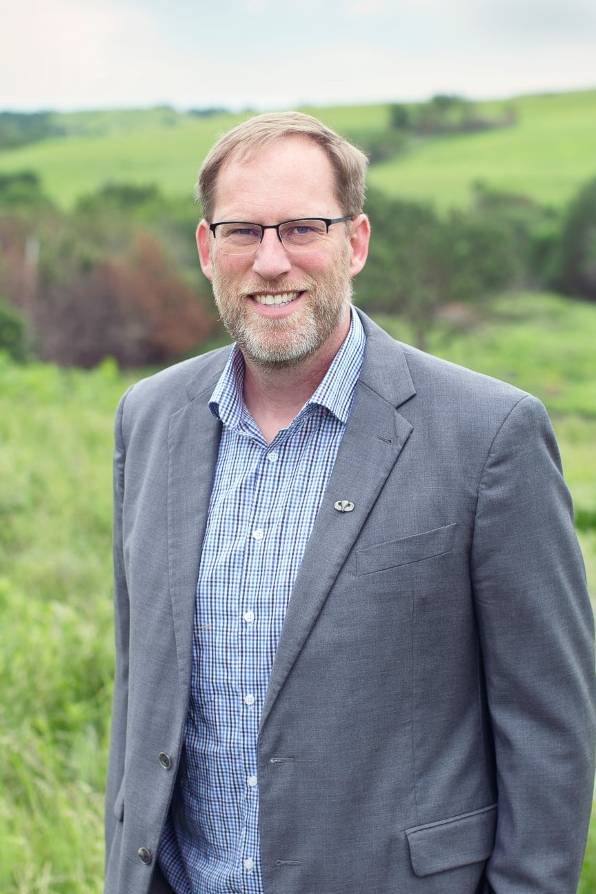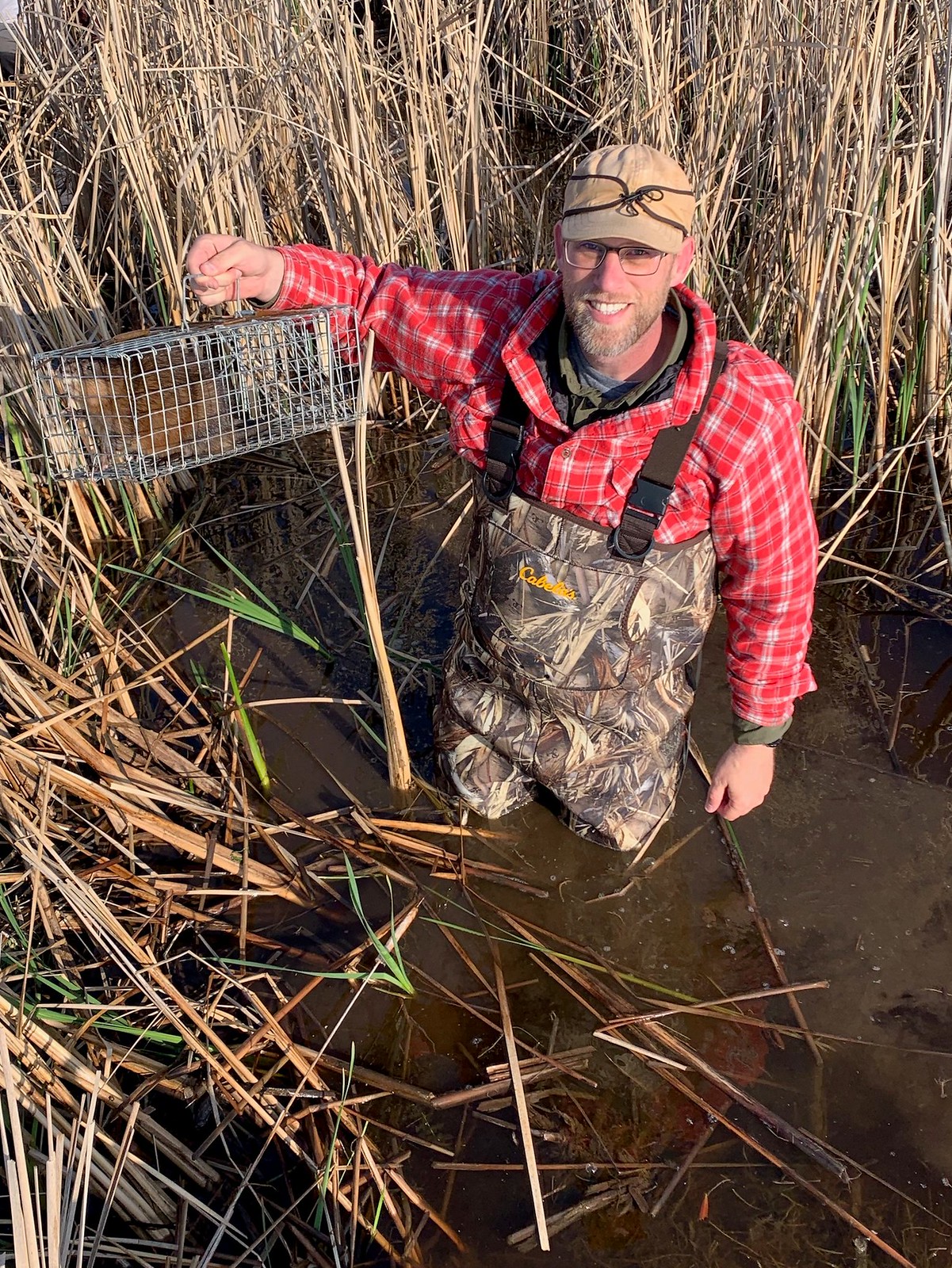Meet Dr. Adam Ahlers
Dr. Adam Ahlers, a 2025 University Outstanding Scholar Recipient
Ph.D. in Natural Resources and Environmental Sciences, University of Illinois ‘15
M.S. in Natural Resources and Environmental Sciences, University of Illinois ‘10
B.S. in Biological Sciences, Eastern Illinois University ‘07
A.A. in Liberal Arts, Northeast Community College ‘98
Share a look at your background.
I grew up in a small ranching and farming community in northeast Nebraska, and spent most of my free time wandering the Elkhorn River looking for wildlife. I’ve appreciated prairies and wetlands my entire life and have focused my research on understanding ways to manage wildlife populations that depend on these types of landscapes. As someone who came from a community and family dependent on agriculture, I’m aware that humans and wildlife must coexist in these types of working landscapes. I’m hopeful the research coming out of our lab can help managers and policymakers make decisions that enhance people’s livelihoods and restore wildlife populations in native landscapes.
What are some of the classes you teach?
Many of them focus on aspects of wildlife management, communicating science or general skills-type courses. One of my favorite classes, Waterfowl and Wetlands Management, teaches students about waterfowl diversity and ecology, and the importance of wetlands to human life. We also discuss ways to manage or restore wetlands so they’re functional and produce the best possible habitats. Students read “A Sand County Almanac” by Aldo Leopold and compare Leopold’s views on the status of wildlife and landscapes in the early 20th century to contemporary issues involving habitat loss, attitudes toward conservation and predictions for future generations of wildlife biologists.
What do you hope students gain from taking your classes?
I hope students walk away from my classes with a deep appreciation for wildlife conservation and management, and that they’ll use this information to better appreciate our natural resources and native landscapes.
How do you work with students outside of the classroom?
We hire students from my classroom and across the College of Ag to work on various applied research projects. Students from my class have been able to contribute to wetland restoration projects in Voyageurs National Park. They’ve also worked on research related to swift fox conservation and management on the prairies of western Kansas. It’s great to see students learn information in the classroom and then apply it to real-life research or management efforts.
How would you describe your teaching philosophy?

My philosophy is generally that all work in the classroom should be student-focused. Many times, instructors can get caught up in reading off slides or asking students to repeat information they heard in a lecture. We need to engage students in conversation, actively include them and their ideas in lessons. We should not turn into instructors who merely convey information and hope students understand important links between topics on their own.
What does receiving the University Outstanding Scholar Award mean to you?
I'm genuinely honored that Kansas State University has recognized my efforts in research and the classroom with this award. It confirms to me that what I’m doing is meaningful, hopefully having a positive impact on my students’ lives and contributing to the conservation and management of wildlife and native landscapes.